#Mustafa Afif
Explore tagged Tumblr posts
Text
Masyarakat Menanti Uji Nyali Empat Legislator Muda Dapil III Pamekasan
PAMEKASAN, MaduraPost – Empat legislator muda yang baru saja dilantik sebagai anggota DPRD Pamekasan dari Daerah Pemilihan (Dapil) III, mencakup Kecamatan Pasean, Waru, dan Batumarmar, kini menjadi sorotan publik. Masyarakat setempat dengan penuh harap menunggu kiprah dan kerja nyata dari keempat wakil rakyat ini yang siap menghadapi berbagai tantangan dalam dunia politik yang dinamis. Empat…
#Abd Rosid#Batumarmar#Dapil III#DPRD Pamekasan#Kiprah Legislator#Legislator muda#Moh. Hasyim Asyari#Mohamad Ali Fikri#Mustafa Afif#Partai Demokrat#Partai Gelora#Partai NasDem#Partai PKB#Pasean#pengusaha#Politikus Muda#Tokoh Desa#Tokoh Pesantren#waru
0 notes
Text



Türkiye'nin ilk ''Kadın Müzesi'' İzmir'de ..
En güzel müze ..
Dünya'da 70 ülkede Kadın Müzesi var..
Türkiye'de ilk ...
Basmane'de , tarihi Tilkilik semtinde ..
Girişte, o efsane fotoğraf karşılıyor sizi..
Mustafa Kemal Atatürk 'ün, 1929'da, Ankara Palas' ta, manevi kızının düğününde, manevi kızı Nebile Hanım'a dans ederken çekilmiş fotoğrafı..
Kimler yok ki ?
Kurtuluş Savaşı Gazisi Kara Fatma gerçek ismi Fatma Seher , İlk Kadın pilot Sabiha Gökçen , Bombalı suikaste kurban verdiğimiz Bahriye Üçok , Türkan Saylan , Dünya güzelimiz Kerime Halis Ece , La Diva Turca Leyle Gencer ..
Birde ilkler ?
ilk kadın Doktor Safiye Ali
ilk kadın Hemşire Esma Deniz
İlk kadın Tiyatro sanatçısı Afife Jale
İlk kadın Gravürcü Aliye Berger
İlk kadın Romancı Fatma Aliye Topuz
İlk kadın Büyükelçi Filiz Dinçmen
İlk kadın Muhtar Gül Esin
İlk kadın Kaymakam Özlem Bozkurt Gevrek
İlk kadın Vali Lale Aytamam
İlk kadın Belediye Başkanı Müfide İlhan
İlk kadın Bakanı Türkan Akyol
İlk kadın Mimar Leyla Asım Turgut
İlk kadın Ressam Mihri Müşfik
İlk kadın Fotoğrafçı Naciye Suman
İlk kadın astrofizikçi Nüzhet Gündoğan
İlk kadın heyeltraş Sabiha Bengütaş
İlk kadın veteriner Sabine Aydemir
İlk kadın Rektör Ayşe Saffet Rıza
Alpar
İlk kadın Gazeteci Selma Rıza Faraceli
İlk kadın Karikatürcü Selma Emircioğlu
İlk kadın Kaptan İlgi Öztuncer
İlk kadın Subay Ülkü Sema Aydın
İlk kadın Polis Fikret Hanım
İlk kadın Polis Komseri Hikmet Cengiz
İlk kadın Emniyet Müdürü Feriha Sanerk
İlk kadın Arkeoloğ Halet Çambel
İlk kadın Orkestra Şefi İnci Özdil
İlk kadın Opera Sanatçısı Semiha Berksoy
İlk kadın Türkiye Güzeli Ferha Tevfik
İlk kadın Hakim Suat Berk
İlk kadın Avukat Süreyya Ağaoğlu
Sadece Türkiye'nin değil, dünyanın,
İlk kadın Yargıtay üyesi Hakimi Melahat Ruacan
İlk kadın Sendikacı Zehra Kosava Duman
İlk kadın Sendika Başkanı Dervişe Koç
İlk kadın Dünya şampiyonu Sporcu Tennur Yerlisu
Otomobil Sürücü Ehliyeti olan ilk kadın Asıme Şahsuvaroğlu
Medeni Kanun'la evlenen Türkiye tarihinde ilk resmi nikahlı kadın Zehra Say
Anlatmakla bitecek gibi değil..
Denizi kız, kızı deniz, sokakları hem kız hemde deniz kokan İzmir de..
Türkiye'nin ilk Kadın Müzesin de..
Türkiye'nin olağan üstü kadınlarıyla sizleri bekliyor..

23 notes
·
View notes
Note
Nurbanu or Mihrunissa
Esmaham or Huricihan
Firuze or Valeria (can't be arsed to remember her Muslim name)
Fahriye or Afife
Cihangir or Hurrem's horse
Nurbanu or Mihrunissa: Nurbanu all the way, Mihrunissa was cool but also her dad was a literal slaver and she worshiped him(plus she marriee Mustafa was boring)
Esmaham or Huricihan: Huricihan because i love how deluded she was about her parents marriage and how she had their worst attributes but zero rizz
Firuze or Valeria (can't be arsed to remember her Muslim name): damn thats hard, on one hand Firuze had cool aesthetics, but Valeria/Nazenin had a funny death(sorry) going with Nazenin because Fatma was there and didn't have such a ridiculous arc(never getting over the fuckinh tattoo)
Fahriye or Afife: Afife, who could ever speak against her just look at her!

Cihangir or Hurrem's horse: i mean both died horribly. the horse murdered with Ayse Hafsa's orders and didn't talk shit to his mother despite it there being an alleged quote that Suleyman truly belived Mustafa would've absolutely murdered Cihangir for being a boy despite being disabled.
thanks for sending these, they qere real fun.
4 notes
·
View notes
Text
Non Hurrem/Suleyman Scenes I Wish Had Been In The Series
**After Suleyman Returns To Find Hurrem Has Been Burned**
Suleyman questions everyone surviving Hurrem to find out how she's been doing scenes the attack. He's told she rarely leaves her chambers, she has the main entrance to her chambers bard every night and sleeps with a knife. Suleyman then calls an architect to design and build a new set of chambers contacted to his.
A few days later word begins to spread through the harem about the new chambers Suleyman has ordered. Hafsa and Mahidevran assume that the new chambers are for Mustafa.
**Sometime After Suleyman Returns To Find Hurrem Has Been Burned**
Suleyman has been back in Tapioca for a few weeks when Hurrem starts acting angry and jumpy. When he ask she says it's just nerves, so he questions Sumbal and Daya and is informed that Fatma the concubine responsible for burning Hurrem was brought back to the palace. Suleyman is furious and orders that Fatma be taken to the dungeons while he goes to comfort his mother.
**Immediately After Learning About Fatma**
Suleyman storms into the Valid Sultan's Cambers looking furious. Hafsa asks what's troubling him. Suleyman angrily confronts his mother about Fatma not only being brought back into the harem, but the fact that it's obvious that she wasn't truly punished. Hafsa try's to defend her actions to Suleyman despite the fact that he's obviously not buying it. At one point she says something that causes Suleyman to almost hit her, he stops himself before he even lifts his hand. He ends the conversation by telling her he will handle Fatma's punishment. He also tells her she needs to dismiss Gulsah because he will be appointing the new harem overseer.
**The Day After Suleyman's Confrontation With His Mother**
Suleyman has his mother and Mahidevran come to the viewing room used to over look events in the courtyard. There wondering why Suleyman has called them there, when he walks out. Their shocked to see him followed by Fatma who is being dragged by guards and an executioner. After Fatma is executed Suleyman looks up at the screen his mother and Mahidevran are standing behind before walking back into the palace.
**A Few Days After Fatma's Execution**
Word about Fatma's execution has spread through the harem. The concubines are gossiping and speculating about what this means for Valid Sultan's possession and the future of the harem. Sumbal inters to announce that Suleyman's has summoned Afife Hutan to take over as overseer of the harem, instead of Gulsah who Hafsa's chose.
**Early Season Three**
After her luncheon for the wives of Pasha and other high ranking men in the empire Hurrem holds a second uncheon for the wives and daughters of the foreign ambassadors. This event is held in the main area of the harem. Hurrem is using the mystery and speculation other countries have about the harem to guaranty the attendance of the women she's invited.
_I'm specifically basing this off of the scene in MC:K when Farya enters the harem for the first time._
**Early Season One Not Long Before Suleyman Returns From Campaign**
Hurrem is setting in her private chambers with Maria embroidering a blanket for the baby. Maria tells Hurrem that she's been worried that she'll be replaced as her concubine because she's not Muslim so she's going to talk to Sumbal about converting. Hurrem tells her she doesn't have to do that, she'll talk to Suleyman to make sure that doesn't happen. Maria responses that she rather do everything possible to make sure there not separated. Hurrem leans over and hugs Maria thanking her.
**The Night Hurrem Gives Birth To Mehmed**
Ibrahim has ordered Gulnihal to be sent to Halvet. As Sumbal is taking her to be prepared she's protesting that she can't do this to Hurrem. Sumbal tells her to keep quiet and when she's in left alone with Suleyman to introduce herself by her old name and nothing will happen. She nods her head and says okay, then keeps quiet while she's prepared.
When she's left alone with Suleyman she introduces herself as Maria, then drops to her knees and say she can't be here because it would break Hurrem's heart. Suleyman realizing that this is Hurrem's Maria who he'd given Sumbal instructions not to send to halvet he's furious. She gives an explanation that Ibrahim picked her and that there was probably confusion because she'd just converted and has been given her new name.
After Suleyman has calmed down they began talking with Maria telling Suleyman stories about Hurrem and her life before the harem with Maria telling him she was revealed to see Hurrem finally starting to live again. A few hours into their conversation Sumbal arrives to inform Suleyman that Hurrem is in labor.
**Season One Early Into Hurrem's First Pregnancy**
Hafsa tells Daya she has decided to marry Hurrem off while Suleyman is on campaign. Daya asks if she'd like her to take Hurrem to be examined immediately to confirm she's not pregnant or wait until a groom has been selected. Hafsa tells her to have the exam done immediately because she doesn't need the stress of having to back out of and engagement if she is pregnant.
_Hafsa trying to marry Hurrem off without finding out if she's pregnant or not was one of her stupidest designs in the inter series._
@redxluna @desmoonl @shivrcys @faintingheroine @minetteskvareninova
#magnificent century#muhteşem yüzyıl#hurrem sultan#sultan suleyman#mahidevran#hafsa sultan#fatma should have been executed#suleyam loves and protects hurrem
28 notes
·
View notes
Text
One of the saddest things about both shows
One of the saddest aspects of both shows is how easily the women of the harem perpetuate the cycle of abuse they once endured against younger, newer, concubines. Despite experiencing the brutality of the system firsthand, many of them seem to lose empathy once they gain power.
Instances like Mahidevran shouting at Helena that she is just Mustafa's property now. And Fatma smiling at it.
Hurrem taunting Mahidevran for still being a slave and calling Firuze “sold meat” (plus unpopular opinion but while I liked the speech to Afife recounting her struggles her ending it “how can a slave matter more than me” kind of soured it), as well as the general hypocritical attitude to Nurbanu doing whatever it takes to make sure her offspring ends up on the throne.
Safiye being comfortable enough to humiliate Handan when Handan was Valide Sultan makes one wonder just how terrible Handan’s own life must have been as a concubine.
Kosem belittling Ayşe for failing to keep track of Murad’s movements and scolding her for being upset about his affair with Farya (when we know for example she sent Gulbahar away the second she learned she had slept with Ahmet). Also she dismissively calls Farya Murad’s “toy” and threatens to take her child away.
To survive, they end up embracing the same system that oppressed them (and oppresses them still), becoming like the people who made them suffer. On some level, I think a part of them lashes out at concubines as a way to get back at what they went through—almost like a form of revenge, relishing in the power they once lacked
6 notes
·
View notes
Text

'' KADIN MÜZESİ ''🌹❤ Türkiye'nin ilk ''Kadın Müzesi'' İzmir'de .. En güzel müze .. Dünya'da 70 ülkede Kadın Müzesi var.. Türkiye'de ilk ... Basmane'de , tarihi Tilkilik semtinde ..
Girişte, o efsane fotoğraf karşılıyor sizi.. Mustafa Kemal Atatürk 'ün, 1929'da, Ankara Palas' ta, manevi kızının düğününde, manevi kızı Nebile Hanım'a dans ederken çekilmiş fotoğrafı..
Kimler yok ki ..?
Kurtuluş Savaşı Gazisi Kara Fatma gerçek ismi Fatma Seher , İlk Kadın pilot Sabiha Gökçen , Bombalı suikaste kurban verdiğimiz Bahriye Üçok , Türkan Saylan , Dünya güzelimiz Kerime Halis Ece , La Diva Turca Leyle Gencer ..
Birde ilkler ..?
ilk kadın Doktor Safiye Ali ilk kadın Hemşire Esma Deniz İlk kadın Tiyatro sanatçısı Afife Jale İlk kadın Gravürcü Aliye Berger İlk kadın Romancı Fatma Aliye Topuz İlk kadın Büyükelçi Filiz Dinçmen İlk kadın Muhtar Gül Esin İlk kadın Kaymakam Özlem Bozkurt Gevrek İlk kadın Vali Lale Aytamam İlk kadın Belediye Başkanı Müfide İlhan İlk kadın Bakanı Türkan Akyol İlk kadın Mimar Leyla Asım Turgut İlk kadın Ressam Mihri Müşfik İlk kadın Fotoğrafçı Naciye Suman İlk kadın astrofizikçi Nüzhet Gündoğan İlk kadın heyeltraş Sabiha Bengütaş İlk kadın veteriner Sabine Aydemir İlk kadın Rektör Ayşe Saffet Rıza Alpar İlk kadın Gazeteci Selma Rıza Faraceli İlk kadın Karikatürcü Selma Emircioğlu İlk kadın Kaptan İlgi Öztuncer İlk kadın Subay Ülkü Sema Aydın İlk kadın Polis Fikret Hanım İlk kadın Polis Komseri Hikmet Cengiz İlk kadın Emniyet Müdürü Feriha Sanerk İlk kadın Arkeoloğ Halet Çambel İlk kadın Orkestra Şefi İnci Özdil İlk kadın Opera Sanatçısı Semiha Berksoy İlk kadın Türkiye Güzeli Ferha Tevfik İlk kadın Hakim Suat Berk İlk kadın Avukat Süreyya Ağaoğlu Sadece Türkiye'nin değil, dünyanın, İlk kadın Yargıtay üyesi Hakimi Melahat Ruacan İlk kadın Sendikacı Zehra Kosava Duman İlk kadın Sendika Başkanı Dervişe Koç İlk kadın Dünya şampiyonu Sporcu Tennur Yerlisu Otomobil Sürücü Ehliyeti olan ilk kadın Asıme Şahsuvaroğlu Medeni Kanun'la evlenen Türkiye tarihinde ilk resmi nikahlı kadın Zehra Say
Anlatmakla bitecek gibi değil..
Denizi kız, kızı deniz, sokakları hem kız hem de deniz kokan İzmir de..
Türkiye'nin ilk Kadın Müzesin de.. Türkiye'nin olağan üstü kadınlarıyla sizleri bekliyor..
Alıntı
4 notes
·
View notes
Text
Kocaeli Şehir Tiyatroları 7 dalda aday
https://pazaryerigundem.com/haber/171203/kocaeli-sehir-tiyatrolari-7-dalda-aday/
Kocaeli Şehir Tiyatroları 7 dalda aday

Kocaeli Şehir Tiyatroları’nın sahnelediği “Yaşamak mı Yoksa Ölmek mi” isimli oyunu 26. Yapı Kredi Afife Tiyatro Ödülleri’ne 7 dalda aday gösterildi
KOCAELİ (İGFA) – Türkiye’nin en prestijli ödülü Yapı Kredi Afife Tiyatro Ödülleri’nin kültür sanat camiasında yarattığı heyecan 26. yılında da devam ediyor. Sezonun adayları ve özel ödül sahipleri Yapı Kredi Kültür Sanat’ta düzenlenen basın toplantısıyla açıklandı. Buna göre Kocaeli Şehir Tiyatroları’nın “Yaşamak mı Yoksa Ölmek mi” adlı oyunu 26. Yapı Kredi Afife Tiyatro Ödülleri’ne 7 dalda aday gösterildi.
ÖDÜLLER 11 HAZİRAN’DA
Hayatını tiyatroya adamış büyük sanatçı Afife Jale’nin adını 26 yıldır yaşatan Yapı Kredi Afife Tiyatro Ödülleri, bu yıl 11 Haziran’da Haliç Kongre Merkezi’nde gerçekleştirilecek görkemli bir törenle sahiplerini bulacak.
Diğer yandan Türkiye’nin en prestijli tiyatro ödüllerinde aday olan oyun, 26-27 Mayıs’ta Antalya Haşim İşcan Kültür Merkezi’nde tiyatro severler ile buluşacak. Biletler tiyatro.kocaeli.bel.tr adresinden alınabiliyor.
24. Yapı Kredi Afife Tiyatro Ödülleri’nde Vişne Bahçesi ile 7 dalda aday gösterilen Kocaeli Şehir Tiyatroları, “Yılın En Başarılı Oyunu”, “Yılın En İyi Hareket Düzeni” ve “Yılın En İyi Dekor Tasarımı” ödüllerine layık bulunmuştu. Geleneksel olarak bir önceki yıl ödül alan kişi bir sonraki yılın kazanına ödül veriyor. Bu sebeple 25. Yapı Kredi Afife Tiyatro ödülleri töreninde de “Yılın En Başarılı Oyunu” ödülünü Kocaeli Şehir Tiyatroları Genel Sanat Yönetmeni Aydın Sigalı takdim etmişti.
7 DALDA ADAY GÖSTERİLDİ
26. Yapı Kredi Afife Tiyatro Ödüllerine “Yaşamak mı Yoksa Ölmek mi” isimli oyun 7 dalda aday gösterildi:
1.Yılın En Başarılı Oyunu (Kocaeli Şehir Tiyatroları)
2.Yılın En Başarılı Yönetmeni (İlham Yazar)
3.Yılın En Başarılı Sahne Tasarımı (Murat Gülmez)
4.Yılın En Başarılı Giysi Tasarımı (Çevren Sarayoğlu)
5.Yılın En Başarılı Işık Tasarımı (Mustafa Bal)
6.Yılın En Başarılı Sahne Müziği (Ali Erel)
7.Yılın En Başarılı Hareket Düzeni (Gizem Erden)

BU Haber İGF HABER AJANSI tarafından servis edilmiştir.
0 notes
Video
youtube
Gecenin Matemini - Muazzez Ersoy ✩ Ritim Karaoke Orijinal Trafik (Hüzzam... Ayrıcalıklardan yararlanmak için bu kanala katılın: ( Join this channel to enjoy privileges.) ✩ https://www.youtube.com/channel/UCqm-5vmc2L6oFZ1vo2Fz3JQ/join Şarkının Orijinal Versiyonunu Linkten Dinleyip Ritim Karaokesiyle Çalışabilirsiniz. ✩ https://youtu.be/O7qjKBVDwvw Aykut ilter Ritim Karaoke Kanalıma Abone Olun Beğenip Paylaşın. Gecenin Matemini - Muazzez Ersoy ✩ Ritim Karaoke Orijinal Trafik (Hüzzam - Curcuna - TSM KORO) Beste: Selahattin Pınar Güfte: Mustafa Nafiz Irmak Makam: Hüzzam Usûl: Curcuna Seslendiren: Elif Güreşçi, Muazzez Ersoy Gecenin, matemini Aşkıma örtüp, sarayım Gittin artık ah, seni ben Nerde bulup yalvarayım Gittin artık, seni ben Nerde bulup, yalvarayım Şimdi ben tıpkı şifâsız Kanayan bir yarayım Şimdi ben tıpkı şifâsız, ah, ah Kanayan bir yarayım Gittin artık, seni ben Nerde bulup yalvarayım Gittin artık, seni ben Nerde bulup, yalvarayım CURCUNA USÜLÜ Curcuna Usulü Curcuna: Bu usul on zamanlıdır. 3 tane 10 zamanlı usul vardır. Bunların vuruşları aynı, yürüklükleri farklıdır. Curcuna usulünün 10/16’lık mertebesi vardır. Ancak 10/8’lik olarak da yazılır. Şarkılarda, türkülerde, ilahilerde, oyun havalarında ve saz semailerinin dördüncü hanelerinde kullanılmıştır. Acaba şen misin kederin var mı (Hicaz) Açmazsan eğer kalbime sen yâre-i hicran (Hicaz) Akşam olunca yârelerim sızlar (Muhayyerkürdî) Anladım sevmeyeceksin beni sen nazlı çiçek (Hicaz) Anlatılmaz bin dert ile geçiyor çileli ömrüm (Hicaz) Aşkınla sürünsem yine aşkınla delirsem (Hüzzam) Bahar geldi gül açıldı aşka geldi bülbül şimdi (Hicazkâr) Beni ateşlere salan o kapkara siyah gözler (Şehnaz) Bir güneş bahtıma bir gün doğacaktır sanırım (Uşşak) Bu akşam bütün meyhanelerini dolaştım İstanbul'un (Kürdilihicazkâr) Derdimi anlatırdım ıssız geceler aya (Uşşak) Gecenin matemini aşkıma örtüp sarayım (Hüzzam) Geçti ömrüm yine hâlâ ben o bin dert ileyim (Nihavent) Göze mi geldim sen mi unuttun (Nihavent) Hançer-i aşkınla ey yâr gönlüm üzre vurma hiç (Hicaz) İçime hep hüzün doluyor (Rast) Kimseye etmem şikâyet ağlarım ben hâlime (Nihavent) Ne müşkülmüş seni sevmek sana yâr olmak (Suzinâk) Senelerce aşkı anmış mahzun kalpler hep aldanmış (Hicazkâr) Selahattin Pınar (22 Ocak 1902, Denizli - 6 Şubat 1960, İstanbul), klasik Türk müziği bestecisi, udi ve tanburidir. Eserleri genelde melankolik bir havaya sahiptir. Hayatı Aslen Denizli'nin, Çal ilçesinden olup, babası Denizli Mebusu Sadık Bey'in görevi nedeniyle henüz 3 yaşındayken Denizli'lerin yoğun olarak yaşadığı İstanbul'un Altunizade semtine taşınmışlardır. Babasının karşı çıkmasına rağmen 12 yaşında ud çalarak musikiye başladı. Dönemin önemli bestekârlarından ders alan Selahattin Pınar ileriki yıllarda tanbur sazına geçti. "Üsküdar Musıkî Cemiyeti" adını alacak olan "Darü'l-Feyz-i Mûsıkî"nin kurucuları arasında bulundu. Burada Telgrafçı Ata Bey, Udî Sami Bey, Tanburî Cemil Bey'in öğrencilerinden Kadıköylü Fuad Bey gibi kimselerle ciddi çalışmalar yapılırdı. Üsküdar Mûsıkî Cemiyeti olduktan sonra bu çalışmalara Necati Tokyay, Emin Ongan, Şükrü Tunar, Hâfız Burhan ve daha nice isim yapmış ve yapacak olan sanatkârlar katılmıştı. Bestenigâr Ziya Bey, Mızıkalı Celâl Bey, Udî Sami Bey, Hanende Hüsameddin Bey, Kâzım Uz ve Ali Rifat Çağatay hoca olarak görev yapıyordu. Selâhaddin Pınar bütün bu hocaların çeşitli yönlerinden yararlandı. Selahattin Pınar Doğum 1902 Çal, Denizli, Osmanlı İmparatorluğu Ölüm 6 Şubat 1960 (58 yaşında) Kadıköy, İstanbul, Türkiye Ölüm sebebi Kalp krizi Milliyet Türk Meslek Bestekâr Etkin yıllar 1923-1960 Evlilik Afife Jale (e. 1929; b. 1935) Seyyare Atıfet Pınar (?) Hatice Yıldız Levent ya da sahne adıyla Muazzez Ersoy (d. 9 Ağustos 1958; Uzunköprü, Edirne) klasik Türk müziği sanatçısıdır. 33. Türkiye Hükûmetinde Kültür Bakanlığının tavsiyesiyle verilmeye başlanan Devlet Sanatçısı ünvanına 1998'de[1] layık görülen sanatçı, seslendirdiği nostaljik şarkılardaki başarısından dolayı "Nostalji Kraliçesi"[2] olarak da[3] bilinir. Sanatçı 2006 yılında Birleşmiş Milletler Mülteci Örgütünün “iyi niyet elçisi”[4] seçilmiştir.[5] Hayatı Çocukluğu ve gençlik yılları İstanbul'un Kasımpaşa semtinde geçen[6] sanatçının müzikle ilgilenmesinde en büyük etken, annesinin müziğe olan ilgi ve sevgisi oldu. Annesinin bu tutkusu sanatçıyı gençlik yıllarında etkisi altına aldı ve ortaokulu bitirdikten sonra öğrenimini müzik dersleri alarak sürdürmeye karar verdi. İrfan Özbakır ve Baki Duyarlar gibi müzik hocalarından dersler aldı. Sanatçı "tezgâhtarlık" yaparak[7][8] kazandığı birikimlerini müzik dersleri için harcadı. 1974 yılında küçük yaşta evlendi ve iki yıl evli kaldı. Bu evlilikten Ender isminde bir oğlu oldu. Eşinden ayrıldıktan sonra müzik dersleri almaya devam etti. HÜZZAM هزّام Türk mûsikisinde bir birleşik makam. Müellif: İSMAİL HAKKI ÖZKAN Dizisi, yerindeki hüzzam beşlisine eviç perdesinde bir hicaz dörtlüsünün eklenmesinden meydana gelmiştir: Yukarıdaki dizide aynı zamanda nevâ perdesi üzerinde bir hicaz dörtlüsünün de mevcudiyeti dikkati çekmektedir.
0 notes
Text

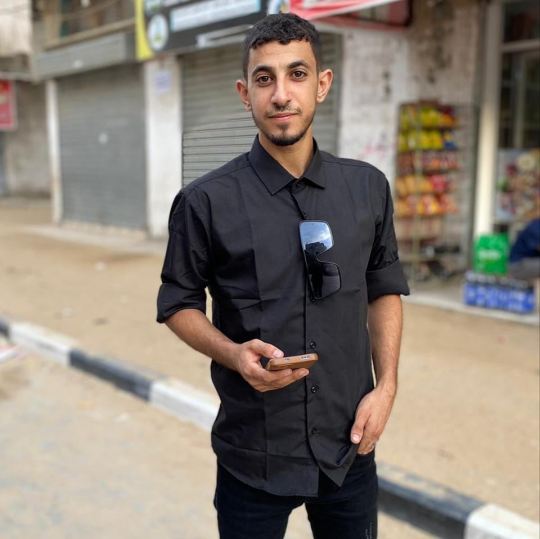







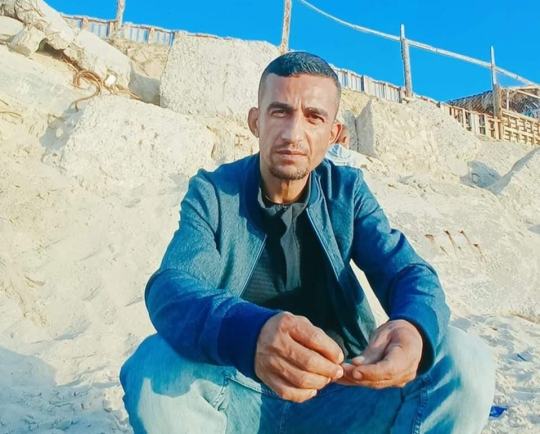

On 26 October, the Palestinian Ministry of Health released the list of names of Palestinians killed since 7 October. Among them, from the al-Madhoun family, are:
Hani Ibrahim Salim (59) and his children Ahmed Hani Ibrahim (25) , Fadi Hani Ibrahim (23), Menna Allah Hani Ibrahim (17), and Uday Hani Ibrahim (16);
Hani’s son Sameh Hani Ibrahim (29), his wife Nagham Hatem Rabhi (27), and their children Islam Sameh Hani (3) and Najwa Sameh Hani (2);
Hani’s son Mohammed Hani Ibrahim (27) and his wife Nariman Hatem Rabhi (23);
Samira Fuad Hassan (55);
Nisreen Hosni Ismail (43);
Mahasen Ahmed Mohammed (41);
Amal Mahmoud Zayed (39);
Adam Ismail Sidqi (33);
Lina Zakaria Mohieddin (27);
Mustafa Mohammed Mahmoud (26);
Muaz Khamis Sidqi (17) and his siblings Dima Khamis Sidqi (14) and Omar Khamis Sidqi (3);
Fahd Munir Salah (15);
Akram Mohammed Abdelrahim (9) and his siblings Mahmoud Mohammed Abdelrahim (8), Fatima Mohammed Abdelrahim (7), Amani Mohammed Abdelrahim (3), Karam Mohammed Abdelrahim (2), and Watan Mohammed Abdelrahim (1);
Salma Ahmed Tawfiq (4);
Lynn Saeed Mahmoud (3);
Muaz Mohammed Ibrahim;
Munir Jihad Munir and his brother Muhammad Jihad Munir;
Samah Mohammad Fahmy;
Jihad Salim;
Izz Moeen Hassan and his siblings Sundus Moeen Hassan, Iman Moeen Hassan and her son Qusay Abdel Madi;
Mahmoud Muhammad Moeen and his siblings Malik Muhammad Moeen, Rim Muhammad Moeen;
Fahmi Ayman Fahmi and his son Karim Fahmi Ayman;
Ataf Fuad;
Aya;
Mahir Abdulkarim Mahir and his sibling Siwar Abdulkarim Mahir;
Maryam Muhammad Hassan Bakhit;
Alaa Muhammad Mahmoud;
Maha Fuad Muhammad;
Nisreen Imad Fayez;
Ahmed Ismail Yahya;
Yassin Maher Mohy al-Din;
Afif Fuad Mahmoud;
Silah Muhammad Awad and her sister Hiba Muhammad Awad;
Intifada Othman Ibrahim;
Hoor Hazem Ahmed and her mother Rawan;
Usama Muhammad Rabah;
Manal Yassin Nimr;
Mundher Hamdi Khalil;
Iyad Omar Khalil and his sister Hala Omar Khalil;
Ahmed Nihad Omar and his sister Tulin Nihad Omar;
Dima Khalil Omar;
Majid Omar Yassin, his wife Safaa Hani, and their children Reeman Majid Omar, Salam Majid Omar, Omar Majid Omar, Ali Majid Omar, and Siwar Majid Omar;
and Khalil Abdulkarim.
You can read more about the human lives lost in Palestine on the Martyrs of Gaza Twitter account and here.
0 notes
Text
Thank you for participating in yet another one of my stupid polls! This time the results were... Kinda astonishing. I mean, Süleyman sweep? Seriously?! Even if you are a shipper, like I am a Taşlicali x Mustafa shipper and I would never ever in a million years claim he loves Mustafa more than, say, his own mom.
Leo getting the second place I get, he's the kind of guy who gets a second place in everything except dying.
And the bronze medal goes to our amazing, glorious fandom and all of the avowed Hürrem stans in it! Can I hear a wahoo for us?
Gül, the master of flattery, has shamefully only reached a fourth place. Then again, at least he's not at the bottom, not the least thanks to my one voice...
...which I then regretted not giving to Gülnihal. Which, boo. The woman has approached sainthood solely trough her patience with Hürrem's shenenigans, and this is how y'all are appreciating her? I am not even talking about Afife, because look, you made Alex cry (and by Alex I mean @shivrcys)!
17 notes
·
View notes
Text
Jadi Wakil Rakyat, Mustafa Afif Bawa Semangat 'BERANI' ke DPRD Pamekasan
PAMEKASAN, MaduraPost – Mustafa Afif, seorang politikus muda yang mewakili Partai Nasdem, telah resmi dilantik sebagai anggota Dewan Perwakilan Rakyat Daerah (DPRD) Kabupaten Pamekasan untuk periode 2024-2029. Pelantikan tersebut berlangsung di Mandhapah Agung Ronggosukowati Pamekasan pada Rabu (21/8/2024), menandai dimulainya amanah baru yang diembannya sebagai wakil rakyat. Warga asal Desa…
#Batumarmar#Dapil III Pamekasan#DPRD Pamekasan#Kecamatan pasean#Mustafa Afif#Partai NasDem#Pelantikan 2024-2029#Pengabdian masyarakat#Pileg 2024#Politikus muda Pamekasan#Tagline BERANI#waru
0 notes
Photo









Magnificent Century Season 3 + Palace Servants & Royal Children, Part 3 (Parts 1,2)
#Muhteşem Yüzyıl#Magnificent Century#mcedit#perioddramaedit#weloveperioddrama#Muhtesem Yuzyil#MC Palace Servants & Royal Children S3#period drama#perioddrama#MCPlus#HistoricalDramasPlus#wspaniałe stulecie#Mihrimah Sultan#The Frustration#Wedding of Mihrimah Sultan#nightmare#The Decision of the Sultan#Awkward-Sultana#Sehzade Mehmet#Sehzade Mustafa#Sehzade Bayezid#mc spoilers#Fahriye Kalfa#Afife Hatun#Sumbul Aga#Mercan Aga#Bali Bey#Sehzade Cihangir#Husrev Pasha
58 notes
·
View notes
Note
Hi again! If a concubine gave the Sultan a son and the boy died, why would the consort not usually be given another chance? Or usually be married off like non-reproductive favorites or mothers of daughters? Was there a religious rule forbidding it? Or was this more of a cultural practice? Were similar rules why the widowed hasekis of Osman II and Murad IV seemed to have stayed unwed? Thanks!
Well... they were given another chance. Afife Kadın, Mustafa II's consort, had five princes who died in infancy and a princess who reached adulthood. Presumably, she went back to Mustafa II's bed even after one of her sons' death. Infant mortality was something that they had to deal with at the time, so it's not like consorts who lost children were ostracized or something.
But, I guess it also kind of depended on the sultan: Meylişah Hatun was blamed by Osman II for the accidental death of her son, this is why he didn't want to see her again. Another sultan — Mustafa II, for example — could have called her back to his bed on the grounds of affection (and I think this is what he did with Afife Kadın, who said that the sultan loved her)
Also, no. Mothers of daughters were not usually married off. They were mothers of imperial princesses. It was not standard practice for mothers of imperial children to re-marry, but it happened. We know about Afife Kadın's second marriage because she told Lady Wortley Montagu her story. But a lot of former consorts were not intimated to find themselves new husbands after their sultan's death. It's something that Ahmed III specifically asked of his brother's harem— for whatever reason he had.
As for your question about Osman II's and Murad IV's hasekis: I don't think there were particular rules against remarriage for haseki sultans. Hümaşah Sultan had been the sultan's legally wedded consort but she still re-married after the death of her only (recorded) child, Şehzade Orhan. Maybe those haseki sultans had children alive at their sultan's deaths: the Ottomans tended not to divide mothers and their small children (Halime saved from execution in 1603 because of Mustafa's tender age is a perfect example of this). Afife Kadın only re-married because her daughter was an adult (or of marriageable age anyway)
#ask post#ask: ottoman history#ottoman harem#afife kadin (mustafa ii)#meylisah hatun#haseki humasah sultan#haseki ayse sultan i#haseki ayse sultan ii#buffyboleyn
34 notes
·
View notes
Text
Sultanate of Women (3/7)
Afife Nurbanu Sultan (c.1525/ 7 December 1583)
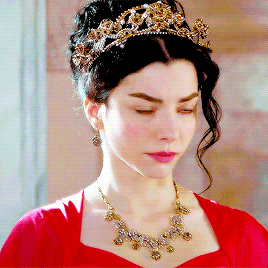
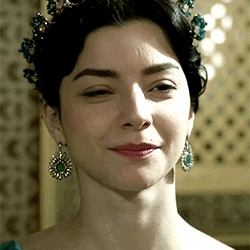
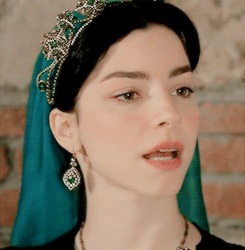
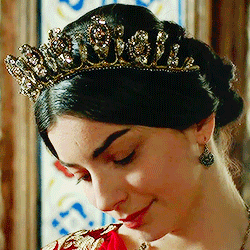
Daughter of Nicolo Venier and Violanta Baffo
Haseki Sultan (Legal Wife) of Sultan Selim II and Valide Sultan of Sultan Murad III
Mother of Sultan Murad III, Sah Sultan, Ismihan Sultan, Gevherhan Sultan, and Fatma Sultan
Grandmother of Sultan Mehmed III, Sehzade Mahmud, Sehzade Mustafa, Sehzade Oman, Sehzade Bayezid, Sehzade Selim, Sehzade Cihangir, Sehzade Abdullah, Sehzade Ahmed, Sehzade Yakub, Sehzade Alemsah, Sehzade Yusuf, Sehzade Hüseyin, Sehzade Korkud, Sehzade Ali, Sehzade Ishak, Sehzade Alaeddin, Sehzade Davud, Sehzade Suleiman, Sehzade Yahya, Hümasah Sultan, Ayse Sultan, Fatma Sultan, Mihrimah Sultan, Rukiye Sultan, Mihriban Sultan, and Fahriye Sultan.
Mother-in-law of Çakırcıbaşı Hasan Pasha, Zal Mahmud Pasha, Sokullu Mehmed Pasha, Kalaylıkoz Ali Pasha, Safiye Sultan, Piyale Pasha, Cerrah Mehmed Pasha, and Kanijeli Siyavuş Pasha
Fun Fact For Newbies: Nurbanu Sultan was born Cecilia Venier-Baffo
47 notes
·
View notes
Photo
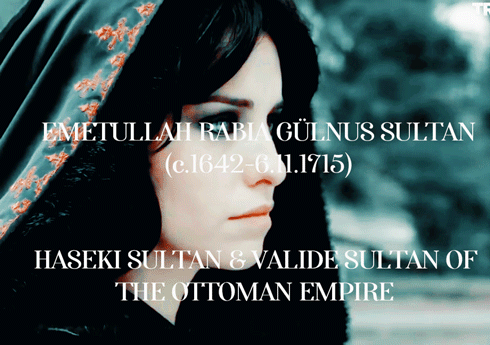
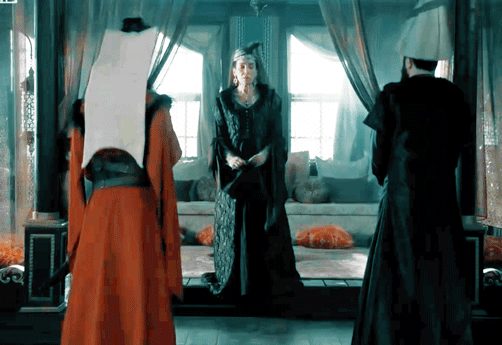
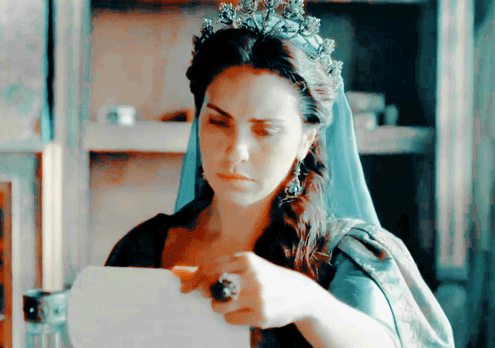

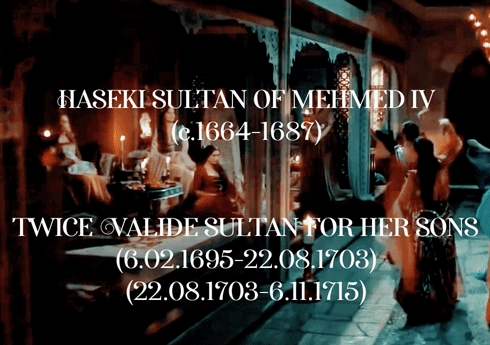
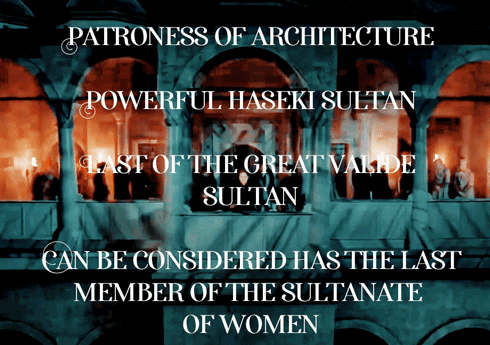
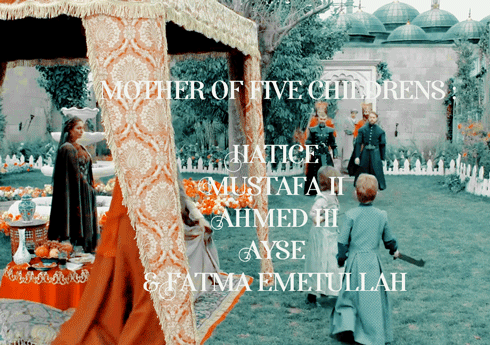
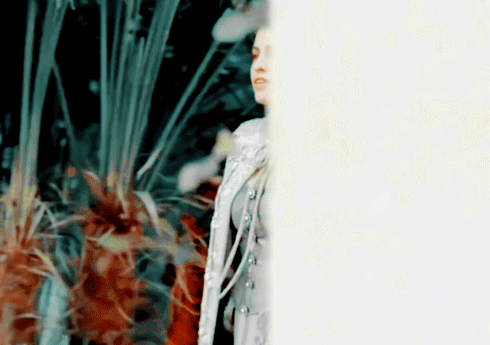
woman that i love: [2/5]
↠ emetullah rabia gulnus sultan
↠ haseki & valide sultan of the ottoman empire
Born around 1642 under the name Evmania Vorya, popular folklore says that she was the daughter of an Orthodox bishop, descendant of the Verzzini family who founded the town of Rethmyno in Crete.
According to tradition, she and her two sisters were captured at the start of the Cretan War, around 1646. Her two sisters were bought by Pasha at the Istanbul market, while Gulnus was sold for the imperial harem
Educated in the harem, which renamed her (perhaps) Emetullah Rabia Gülnus, she became, at an unknown date, Mehmed's concubine. The Venetian ambassador described her as a tall, slender woman with black curly hair and blue eyes.
She gave him her first child: a daughter, Hatice, around 1660, then her first son, Mustafa, in 1664. Of a total of five children, four will reach adulthood (only Ayse died in childhood)
After Mustafa’s birth, Gülnus was named Haseki Sultan. She was the only (or one of the very few) haseki to accompany her husband on military campaigns, and far from the battlefields, she was known to join him on his hunting parties. Mehmed insisted each time, to take her with him. Subject of contemporary European engravings, she was drawing riding a horse. His son, Ahmed, was the first sultan born outside of Turkey, in the present-day Bulgaria, in December 1673.
A myth on Ottoman empire was the possibly rivalry between Gülnus and the concubine Gülbeyaz and possibly lead the murder of that concubine. If rivalry was largely possible, murder seem exagerate or invented.
Following the deposition of Mehmed IV, Gülnus was exiled in the old palace and separated from his sons. Afife Kadin wrote in her poems that she regularly heard Gülnus screaming and crying between the walls of her room.
After the reigns of Ahmed II and Süleyman II, in 1695, Gülnus became Valide Sultan for his eldest son. Unfortunately, it is deposed in 1703 and Gülnus confirms the deposition. Ahmed succeeds his brother. To calm the people angry with the Valide Sultan, he exiles him briefly to the Old Palace.
In 1711, it was she who persuaded Ahmed to declare war on Russia after two years of propaganda in favor of an alliance with the Swedish king Charles XII. Gülnus persuaded his son that the king was a man worth taking a risk.
Emetullah Rabia Gülnus died of illness in 1715, possibly at the age of seventeen.
#get to know me#emetullah rabia gulnus sultan#ottoman empire#sultanate of women#*mine#*women that i love#history#ottoman history
85 notes
·
View notes
Text
Portrait of Emetullah Rabia Gülnüş / Emetullah Rabia Gülnüş portréja
Origin and youth
Emetullah Rabia Gülnüş was a woman of Greek descent who was certainly captured during the Venetian-Ottoman War. The grimace of fate is that the outbreak of the war was attributable to Mehmed IV, who later became Emetullah's sweetheart. In the summer of 1645, Ibrahim I declared war on Venice and sent a large Turkish army to Crete. The immediate cause of the war was that Maltese pirates captured an Ottoman ship carrying several influential people. Among them was the wet-nurse of Mehmed IV and her own son, whom Sultan Ibrahim I loved very much. So much that the he cared more with the wet-nurse's son than he did with his own child, Mehmed. The war lasted for decades, until 1669, so it is not possible to determine exactly when Emetullah was captured.
Emetullah was a gift from a certain Deli Hüseyn Pasha, who took the Cretan slaves he had captured to the Sultan’s palace and recommended the bests to the sultan’s harem. Deli Hüseyn Pasha died in 1659, so Emetullah definitely joined the harem before that time. This, unfortunately, does not help us, for considering that Emetullah was already a favorite of the Sultan in 1660 and this had to be preceded by several years of education, so most likely she was captured before 1654. Many give the year 1645 as captivity, however, this is almost ruled out. In general, children under the age of 5 were not caught, because they caused more trouble than benefit, and were more likely to die during the long and tumultuous journey. Assuming that Emetullah was roughly the same old — or younger — than Mehmed IV (born in 1642), she could have been captured in 1648 at the earliest.

The consort
Emetullah Rabia Gülnüş matured into a beautiful young woman, making her perfectly suited to entertain the sultan. Emetullah is one of the few sultanas whose appearance is known in considerable detail. One of the ambassadors had the opportunity to see one of Emetullah's clothes and belts, on the basis of which he thought the Sultana was a taller-than-average but graceful. The same ambassador heard from his informant that the Sultana had fine skin and blue eyes. Other descriptions said she had black curly hair. Towards the end of her life, Emetullah was reportedly more plump than slender.
It is not known exactly when Mehmed started receiving concubines and when Emetullah became his favorite. Mehmed's first child, a girl, was born in 1660. According to circumstantial evidence, this girl, Hatice, was the first child of Emetullah Rabia Gülnüş. Based on this, we can assume that Emetullah became Mehmed’s partner in the late 1650s. However, their relationship had not really deepened at this point, as Mehmed spent the next period away from his harem, traveling a lot.
Shortly afterwards, the Sultan moved his entire court to Edirne, making it the de facto capital of the Empire. It was a perfect timing that his firstborn son, Mustafa, was born here in 1664. Mehmed was so happy for the birth of his son that he piled up the child’s mother, Emetullah Rabia Gülnüş, with amazing gifts and never left the woman alone from then on. He took her with him on his hunts and even on his campaigns. Together they had at least two more children, Ahmed (later Ahmed III) in 1673 and Fatma Emetullah in 1675. In addition to the four children mentioned above, Mehmed certainly had other children (Ayşe, Bayezid, Ümmügülsüm, Süleyman). The identity of their mother is unknown, it could have been Emetullah Rabia Gülnüş, but even other concubines.
As the Sultan’s favourit concubine, the mother of his children, Emetullah, was the second highest-ranking woman in the harem. Her relationship with the first woman of the harem is controversial. Some say Emetullah was an evil, violent woman who regularly confronted her mother-in-law, Mehmed’s mother, Turhan Hatice Valide Sultan. However, there is no evidence to that effect, in fact! Emetullah and Turhan certainly worked together periodically to achieve their political goals. In 1682, Grand Vizier Merzifonlu Kara Mustafa Pasha began to anger Turhan more and more, as he tried to make her political influence impossible. We don’t know what motivation Gülnüş was for, but she helped Turhan remove the pasha. Eventually, unfortunately, Turhan died before the pasha was deposed. Either way, this collaboration makes it unlikely that the relationship between Emetullah and Turhan would have been bad. In addition, Emetullah had a good relationship with Turhan’s eunuch, Yusuf Agha, which would also not have been possible if the two women did not like and respect each other.
Many blame Emetullah’s ambitions for the supposedly fragile relationship. Legend has it that Mehmed’s beloved, Emetullah Rabia Gülnüş, tried to persuade him to execute his half-brothers and make their own sons his heir instead. However, knowing the infinitely close relationship between Mehmed and his sons, we cannot rule out that Mehmed himself wanted to change the inheritance. Whoever was its inventor, no one supported the idea, not the people, not the pashas and not even Mehmed’s mother, Turhan. Turhan, to protect Prince Suleiman and Ahmed from death and his son from fall, always kept her two foster sons with her. If Turhan traveled, she took them with her so that Mehmed would not execute them in her absence.

Sultana on the campaigns
After the birth of Mustafa, the sultan did not want to go anywhere without Emetullah and his son. From then on, Emetullah accompanied her sweetheart everywhere, hence her nickname became, the "itinerant sultana". The first such campaign took place in 1672, when Mehmed took the whole harem of his, his mother, his Haseki, and his sisters to Polish territory. From this trip we are left with a description of an incident in which Emetullah’s silver carriage was stuck in the mud due to bad weather on the way to the Babadag camp. The sultan could not wait for hours for the carriage to be released, so Fazıl Ahmed Pasha, the Grand Vizier, was left with his men to help the Sultana. On August 28, 1672, Kamianets-Podilskyi fell and became the property of the Ottomans. Mosque were formed from all the churches in the city, one of which was named in honor of Gülnüş. With this she became the first and only Haseki Sultan to enjoy such a privilege.
They spent a few months near the front and then returned to Edirne. However, the agreement was crossed by the Polish, so in 1673 Mehmed was forced to return to the front and took his sweetheart with him again. This is particularly noteworthy and not just because the sultans had not taken their wives on the battlefield for centuries, but because Emetullah Rabia Gülnüş was already heavily pregnant with her second son. The baby was finally born during the campaign on 31 December 1673 at Hacıoglupazarı in present-day Bulgaria. This was the only time an Ottoman prince was born near the battlefield, away from the security of the capital or the provinces. The fact is, however, that this camp was also very far from the real war.
After the success of the Polish campaign, the Sultan retreated to Edirne, where in 1675 he organized a huge ceremony in which his two sons, Mustafa and Ahmed, were circumcised and his eldest daughter, Hatice, was married off. Mehmed's appearance was reported at the event, but many praised the princes and Emetullah Rabia Gülnüş, who attended the ceremony as well. According to one agha present, the Sultana was a beautiful woman with chesnut hair. It is questionable, of course, to what extent we can believe such descriptions, since her hair was certainly covered with a veil, even if she was present. Then in 1676 Mehmed embarked on another campaign - again, of course, with his sweetheart on his side - this time to match the Russians. The aim of the campaign was to rule over today's Ukrainian - then Polish - territories. Finally, in 1681, the campaign ended with an agreement.
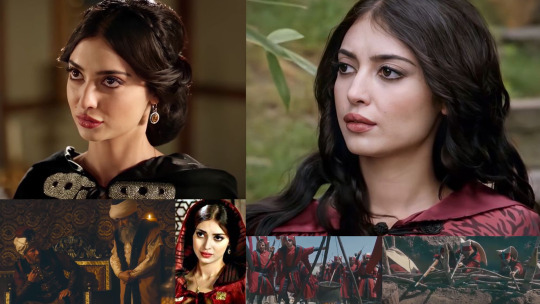
The first woman in the harem and the fall
Whatever the relationship between Turhan and Emetullah was, with the death of Turhan in 1683, the road to the top of the harem opened up before Emetullah. Although her large-scale construction projects, as a Haseki, began during Turhan’s life, her political career could have really gained momentum only without Turhan. There is a known case, for example, in which one of Mustafa's teachers, Feyzullah Efendi, who was very close to Emetulla committed a mistake and was faced with severe punishment. Eventually, Emetullah intervened and saved the man's life.
However, Emetullah could not enjoy the control of the harem for long. The 1680s were about a series of tragedies. The enemies of the Ottoman Empire clashed in turn and squeezed the Ottomans more and more out of European territories. This caused general dissatisfaction, and then over time, chaos, executions, financial problems spread throughout the empire, more and more rebellions set in, and even natural disasters plagued the empire. Turhan's death was practically sealed the end of Mehmed IV also. He became increasingly unpopular, and suffered the final blow in 1687. After the tragic outcome of the second battle of Mohács, Mehmed was dethroned and his younger brother, Suleiman, was put to the throne, as Suleiman II. This meant Emetullah's move to the Old Palace.
Not only did Emetullah face the loss of her power and exile, but she was separated from her beloved. A member of Mehmed’s harem, the poet Afife Kadin, at this time composed one of her poems about Gülnüş. According to the verse, Gülnüş sobbed and shouted as long as her lungs could hold, while her loved one was torn away from her and locked up. While Mehmed sobbed quietly in the kafes, his beloved cried across the wall. In another verse of hers, Afife writes, "Tell Gülnüş to wear black / to suffer in pain / While Sultan Mehmed weeps in Şimşirlik" We do not know if Emetullah and Mehmed may have met until Mehmed's death in 1693.
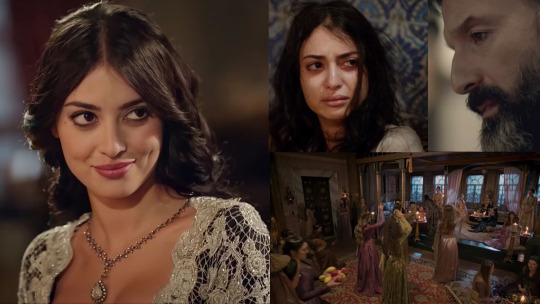
Back to the top
Due to Süleyman II's ill condition, followed by the old Ahmed II, Emetullah did not have to linger in the Old Palace for long. In 1695, barely 8 years after her retirement, Emetullah was able to return as Valide Sultan. Ahmed II died in Edirne and Mustafa II took his place as Sultan. Emetullah was then in the Old Palace in Istanbul, so thats where she received the news. As part of a huge ceremony, Emetullah went from the Old Palace to Topkapi Palace and from there to Edirne. On the way to Edirne, several bridges had to be renovated before the Valide Sultan's arrival. The costs of the bridge-renovations were recorded in the registers as Ahmed II's funeral expenses. Arriving in Edirne, her son welcomed the new Valide Sultan.
In the following years Edirne remained the de facto capital of the Empire. The sultan spent only a short period of time in Istanbul with his court, and then they were not resided in Topkapi Palace either, but preferred other palaces. Mustafa and Emetullah quickly gathered their trustworthy men around them and began to rule according to their own tastes. Thus, for example, the Feyzullah Efendi who had previously been rescued from execution by Emetullah, became the Seyhülislam. During Mustafa's reign, Emetullah built an unprecedented power for herself, her all-intertwined political influence was huge and also her son openly discussed state affairs with her. In addition, Emetullah regularly showed up among the people, leaving the harem, visiting her daughters or foundations. She lived a fairly free life. So much that at certain events she stood right next to her son, veiled but not hiding. At other times, she welcomed Seyhülislam, Grand Vizier, or other influential statesmen openly or were present at parades in Eyüb.
Emetullah’s tremendous influence over her son, the rampant corruption among statesmen, and the neglect of Istanbul all provoked the displeasure of the people. In 1703 a huge revolt broke out in the capital, but it quickly reached Edirne as well. Emetullah provided good advice to her son, trying to quickly replace any statesman who might have harmed them, but it was too late. During the rebellion Mustafa II was dethroned. The rebels refused to ascend Mustafa's younger brother, Ahmed, as he was also the son of Emetullah. They wanted to replace Mustafa II with the 11-years-old Şehzade Ibrahim, the son of Ahmed II and his Haseki, Rabia Sultan . The ulema, however, rejected this based on the boy's age, and as a polite gesture a letter was written to Emetullah asking for permission to dethrone Mustafa and replace him with Ahmed III. Although she had no real say, Emetullah responded in agreement:"All of you have requested in concord and unanimity that my majestic son Sultan Ahmed be seated on the imperial throne and that my other son Sultan Mustafa be deposed. Your petition has been complied with."
However, the dethronement of Mustafa was far from enough for the rebels. Gülnüş was demanded to leave Edirne or Topkapi Palace and retire to the Old Palace. Emetullah did indeed remain there until the circumstances calmed down enough for her to return. Perhaps she did not even regret her retreat, for Mustafa, her firstborn son, died in December 1703 of natural causes.

Shadow Valide
The pashas tried to keep Gülnüş away from her son and from state affairs because they feared a revenge from Emetullah on Mustafa's dethronement and subsequent death. They feared they would face a revenge campaign like the pashas who in 1648 dethroned and executed the son of Kösem Sultan, Ibrahim I. In the meantime, however, it turned out that Gülnüş did not even think of revenge. She learned from her previous mistakes and from the end of the Kösem Sultan, so she was much more careful and respectful with the pashas from then on than before. There were rewards for this.
One of Ahmed III’s first steps was to take the imperial court back to Istanbul, so Edirne ceased to be the de facto capital. To increase the sultan’s popularity among the people of Istanbul, plenty of public events were organized, such as archery competitions. Of course Gülnüş tried to help her second son, Ahmed III, but she did it all from the background. However, her participation in political life is by no means conditional. Several letters have survived, which she exchanged with the pashas during Ahmed III's reign. When one of the Grand Vizier tried to have a say in which eunuch Gülnüş would appoint to lead the harem, he quickly found himself without a position. So Emetullah Rabia Gülnüş did not give up politics at all, only she played it in a smarter and less spectacularly way.
Emetullah Rabia Gülnüş returned to the limelight once again. In 1709, during the war between the Russians and the Swedes, the Swedish king was captured and then found refuge in the Ottoman Empire. The king sought the help of the Ottomans to regain his throne. Emetullah, along with the second Vizier Damat Silahdar Ali Pasha, publicly stood by the king's request and tried to persuade Ahmed III to wage war against the Russians. The other members of the divan, such as the Grand Vizier, did not agree at all with Gülnüş's will, so a controversy ensued. Ahmed III finally, following the advice of his mother, went to war with the Russian Empire in 1711. The war ended with treaties.
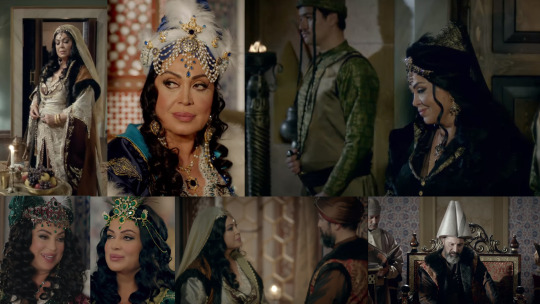
Her death and legacy
Emetullah Rabia Gülnüş followed her son from Istanbul to Edirne in the summer of 1715 to welcome there the army of the Grand Vizier, who had successfully re-conquered Morea from the Venetians. Her health here deteriorated in a few months and whatever the best doctors of the empire tried Emetullah Rabia Gülnüş died on November 6, 1715, in Edirne. Funeral prayers were held in Edirne in the presence of the Sultan, Grand Vizier, Ulema, and all important statesmen, and then her body was taken back to Istanbul, where she was buried in her own tomb on November 9th. Her turbe is particularly interesting, as it is not covered like most dynastic tombs, but open to the sky. By the way, this was built according to Emetullah's own wishes. There are plenty of plants and water in the octagonal tomb, which was probably built like that to resemble the Garden of Eden.
During her life, Gülnüş managed several construction projects, during which mosques, soup kitchens, schools, fountains and a tomb were built. But she converted several former churches into mosques also, and others were named in his honor. She also had foundations in Üsküdar, Edirne, Chios, Mecca, Medina, Kastamonu and Menemen.
Emetullah Rabia Gülnüş was the last valide sultan during the period of the Sultanate of Women. Although there were still some Valide with exceptional influence after her, no one was able to gain an influence similar to her and her predecessors anymore. It was the death of Emetullah Rabia Gülnüş that eventually completely ended the period of the Sultanate of Women. True, she was not the last Haseki Sultan, because her brother-in-law Ahmed II had a Haseki, Rabia Sultan, but the woman had already died in 1712 before Emetullah. So with the death of Gülnüş, on November 6, 1715, the more than 180-years-long period of the Sultanate of Women ended. The Sultanate of Women was followed by the Tulip era, which was one of the most peaceful periods in the history of the empire, during which Westernization began.
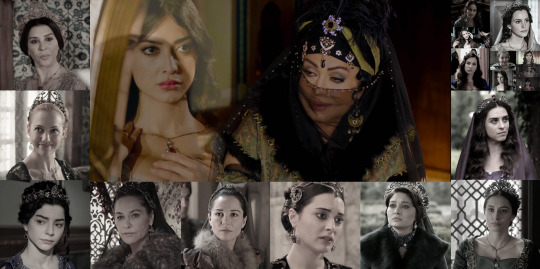
Used sources: B. İ. Argıt - A Queen Mother and the Ottoman Imperial Harem: Rabia Gülnuş Emetullah Valide Sultan (1640-1715); M. Ç. Uluçay - Padişahların Kadınları ve Kızları, Y.Öztuna - Devletler ve Hanedanlar, N. Sakaoğlu - Bu Mülkün Kadın Sultanları; M. Özgüleş - The Women Who Built the Ottoman World: Female Patronage and the Architectural Legacy of Gülnuş Sultan; H. G. Majer - The Harem of Mustafa II (1695-1703); J. Dumas - Les perles de nacre du sultanat; A. D. Alderson - The Structure of the Ottoman Dynasty; L. Peirce - The Imperial Harem: Women and Sovereignty in the Ottoman Empire; C. Finkel - Osman's Dream: The Story of the Ottoman Empire
* * *
Származása fiatalkora
Emetullah Rabia Gülnüş görög származású nő volt, akit minden bizonnyal a velencei-oszmán háború során fogtak el. A sors fintora, hogy a háború kirobbanása köthető volt IV. Mehmedhez, aki később Emetullah kedvese lett. I. Ibrahim 1645 nyarán hadat üzent Velencének és egy nagy török sereget küldött Krétára. A háború közvetlen oka az volt, hogy máltai kalózok fogtak el egy oszmán felségjelzésű hajót, mely több befolyásos személyt szállított. Köztük volt IV. Mehmed szoptatósdajkája és annak fia, akiket I. Ibrahim szultán nagyon szeretett. Olyannyira, hogy a szoptatósdajka fiával többet törődött, mint saját gyermekével, Mehmeddel. A háború évtizedeken keresztül zajlott, egészen 1669-ig, így pontosan nem meghatározható, hogy Emetullah mikor esett fogságba.
Emetullah egy bizonyos Deli Hüseyn Pasa ajándéka volt, aki a saját maga által ejtett krétai rabszolgákat vitte a szultáni palotába és a legjobbakat a szultán háremébe ajánlotta. Deli Hüseyn Pasa 1659-ben elhunyt, így Emetullah mindenképp ezen időpont előtt került a hárembe. Ez sajnos nem segít nekünk, ugyanis tekintve, hogy Emetullah 1660-ban már a szultán kedvence volt és ezt több éves oktatás kellett, hogy megelőzze, a legvalószínűbb, hogy 1654 előtt esett fogságba. Sokan adják meg az 1645-ös évet, mint fogságba esés, azonban ez szinte kizárt. Általában 5 év alatti gyerekeket nem fogtak el, velük több volt a baj, mint a haszon és nagy eséllyel haltak meg a hosszú és viszontagságos út során. Ha feltételezzük, hogy Emetullah nagyjából egy idős volt - vagy fiatalabb -, mint IV Mehmed (1642), legkorábban 1648-ban eshetett fogságba.

Az ágyas
Emetullah Rabia Gülnüş csodaszép fiatal nővé érett, így tökéletesen alkalmas lett a szultán szórakoztatására. Emetullah azon kevés szultána közé tartozik, akinek külsejét meglehetősen részletesen ismerjük. Az egyik követnek lehetősége volt látni Emetullah egyik ruháját és övét, mely alapján az átlagnál magasabb, de kecses nőnek gondolta a szultánát. Ugyanez a követ úgy hallotta informátorától, hogy a szultánának finom bőre és kék szeme van. Más leírások szerint fekete göndör haja volt. Élete vége felé Emetullah a beszámolók szerint inkább volt telt, mint karcsú.
Nem tudni pontosan, hogy Mehmed mikor kezdett ágyasokat fogadni és hogy Emetullah mikor vált a kedvencévé. Mehmed első gyermeke, egy kislány 1660-ban született. Közvetett bizonyítékok alapján ez a lány, Hatice, Emetullah Rabia Gülnüş első gyermeke volt. Ez alapján feltételezhetjük, hogy Emetullah a kései 1650-es években vált Mehmed partnerévé. Kapcsolatuk azonban ekkoriban még nem mélyült el igazán, hiszen Mehmed a következő időszakot a háremétől távol töltötte, sokat utazott.
A szultán nemsokkal később az egész udvartartását áthelyezte Edirnébe, ezzel gyakorlatilag mintegy de facto fővárossá tette meg az általa annyira kedvelt várost. Tökéletes időzítés volt, hogy elsőszülött fia, Musztafa itt látta meg a napvilágot 1664-ben. Mehmed annyira örült fia születésének, hogy elképesztő ajándékokkal halmozta el a gyermek anyját, Emetullah Rabia Gülnüşt és innentől kezdve sosem hagyta magára a nőt. Magával vitte a vadászataira, sőt hadjárataira is. Együtt még legalább két gyermekük született, Ahmed (későbbi III. Ahmed) 1673-ban és Fatma Emetullah 1675-ben. Mehmednek a fent említett négy gyermeken kívül bizonyosan voltak más gyermekei (Ayşe, Bayezid, Ümmügülsüm, Süleyman). Az ő anyjuk kiléte ismeretlen, lehetett Emetullah Rabia Gülnüş is, de akár más ágyasok is.
Mint a szultán kiemelt ágyasa, gyermekeinek anyja Emetullah a hárem második legmagasabb rangú asszonya volt. Viszonya a hárem első asszonyával ellentmondásos. Egyesek szerint Emetullah gonosz, erőszakos nő volt, aki rendszeresen szállt szembe anyósával, Mehmed édesanyjával, Turhan Hatice Valide szultánával. Azonban nincs erre utaló bizonyíték, sőt! Emetullah és Turhan időszakosan bizonyosan együttműködtek, hogy politikai céljaikat elérjék. 1682-ben Merzifonlu Kara Mustafa Pasa nagyvezír egyre jobban kezdte dühíteni Turhant, ugyanis próbálta ellehetetleníteni annak politikai befolyását. Azt nem tudjuk, hogy Gülnüş milyen motiváció miatt, de segített Turhannak a pasa eltávolításában. Végül sajnos Turhan előbb halt meg, minthogy a pasát lefokozták volna. Akárhogyan is, ez az együttműködés teszi valószínűtlenné, hogy Emetullah és Turhan közt rideg lett volna a kapcsolat. Mindemellett Emetullah jó viszonyt ápolt Turhan eunuchjával, Yusuf Agával, ami szintén nem lett volna lehetséges, ha a két nő nem kedveli és tiszteli egymást.
Sokan a feltételezett rideg kapcsolatért Emetullah ambícióit okolják. A legenda úgy tartja, hogy Mehmedet kedvese, Emetullah Rabia Gülnüş szultána igyekezett meggyőzni arról, hogy végeztesse ki elzárva tartott féltestvéreit és helyettük közös fiaikat tegye meg örökösének. Ismerve azonban a Mehmed és fiai közt fennálló végtelenül szoros viszonyt, nem zárhatjuk ki, hogy maga Mehmed kívánta megváltoztatni az öröklést. Akárki is volt a kifundálója, senki sem támogatta az ötletet, sem a nép, sem a pasák és Mehmed anyja, Turhan szultána sem. Turhan, hogy megóvja Szulejmán és Ahmed hercegeket a haláltól, fiát pedig a bukástól, mindig maga mellett tartotta két nevelt fiát. Ha Turhan utazott, magával vitte őket, nehogy távollétében Mehmed kivégeztesse őket.

Szultána a fronton
Musztafa születése után a szultán nem kívánt Emetullah és fia nélkül bárhová is menni. Innentől kezdve Emetullah mindenhová elkísérte kedvesét, innen ered beceneve, a "vándorló szultána" (itinerant sultan). Az első ilyen hadjáratra 1672-ben került sor, mikor Mehmed az egész háremét, anyját, Haszekijét, húgait is magával vitte a lengyel területekre. Erről az útról marad ránk egy esemény leírása, miszerint babadagi tábor felé vezető úton a rossz időjárási viszonyok miatt Emetullah ezüst fogata beragadt a sárba. A szultán nem várhatott órákat, amíg az elakadt kocsit kiszabadítják, így Fazıl Ahmed Pasa, a nagyvezír maradt hátra embereivel, hogy segítse a szultánát. 1672. augusztus 28-én Kamianets-Podilskyi elesett és az oszmánoké lett. A városban található összes templomból mecsetet alakítottak, melyek közül az egyiket Gülnüş tiszteletére nevetek el. Ezzel ő lett az első és egyetlen Haszeki szultána, aki ilyen kiváltságban részesülhetett.
Néhány hónapot töltöttek a front közelében, majd visszatértek Edirnébe. A megkötött egyezséget azonban a lengyelek keresztülhúzták, így 1673-ban Mehmed kénytelen volt visszatérni a frontra és magával vitte kedvesét is. Ez azért különösen említésre méltó, mert azontúl, hogy a szultánok évszázadok óta nem vitték harctérre asszonyaikat, Emetullah Rabia Gülnüş már előrehaladott terhes volt második fiával, akit végül a hadjáraton szült meg 1673. december 31-én Hacıoglupazarınál, a mai Bulgária területén. Ez a valaha volt egyetlen olyan eset, amikor egy oszmán herceg a hadszíntéren született meg, távol a főváros vagy a provinciák biztonságától. Tény azonban, hogy ez a tábor is igen távol volt a valódi fronttól.
A lengyel hadjárat sikere után a szultán Edirnébe vonult vissza, ahol 1675-ben hatalmas ünnepséget szervezett, melyen két fiát Musztafát és Ahmedet körülmetélték, legidősebb lányát Haticét pedig kiházasította. Az eseményen beszámoltak Mehmed külleméről, de sokan méltatták a herceget és Mehmed mellett az ünnepségen résztvevő Emetullah Rabia Gülnüşt is. Az egyik jelenlévő szerint a szultána gesztenyebarna hajú, gyönyörű nő volt. Kérdéses persze mennyire hihetünk az ilyen jellegű leírásoknak, hiszen haját egészen biztosan fátyol fedte, ha jelen volt is. 1676-ban aztán Mehmed újabb hadjáratra indult - természetesen ismét kedvesével az oldalán -, ezúttal az oroszokkal kívánt megmérkőzni. A hadjárat célja az mai ukrán - akkori lengyel - területek feletti uralom volt. Végül 1681-ben megállapodással zárult le a hadjárat.

A hárem első asszonya és a bukás
Bármilyen volt is Turhan és Emetullah kapcsolata, Turhan 1683-as halálával megnyílt Emetullah előtt az út a hárem csúcsára. Bár nagyszabású Haszekiként végzett építési projektjei még Turhan életében elkezdődtek, politikai karrierje ekkor lendülhetett meg igazán. Ismert például egy eset, mikor Musztafa egyik tanítója - aki igen közel állt Emetullahoz - Feyzullah Efendi hibát követett el és súlyos büntetés volt kilátásba helyeztve számára. Végül Emetullah közbelépett és megmentette a férfi életét.
Emetullah nem élvezhette azonban sokáig a hárem irányítását. Az 1680-as évek a sorozatos tragédiákról szóltak. Az Oszmán Birodalom ellenségei sorra fogtak össze egymással és szorították egyre kintebb az oszmánokat az európai területekről. Ez általános elégedetlenséget okozott, majd idővel káosz, kivégzések, anyagi problémák terjedtek el mindenhol a birodalomban, egyre több lázadás indult útjára és még természeti katasztrófák is sújtották a tragikus helyzetben lévő birodalmat. Gyakorlatilag már anyja halálával megpecsételődött Mehmed sorsa, egyre népszerűtlenebb lett, a végső csapást pedig 1687-ben szenvedte el. A második mohácsi csata tragikus kimenetele után Mehmedet trónfosztották és öccsét, Szulejmánt ültették trónra, aki így évtizedekig tartó elzárt élete után megkezdhette uralkodását II. Szulejmán néven. Ez egyet jelentett Emetullah Régi Palotába való költözésével.
Emetulláhnak nem csak a hatalma elvesztésével és száműzetéssel kellett szembenéznie, de elválasztották őt kedvesétől. Mehmed háremének egy tagja, a költő Afife Kadin ekkoriban komponálta egyik Emetullah Rabia Gülnüşről szóló versét. A vers szerint Gülnüş szultána addig zokogott és kiáltozott, mikor kedvesét a szultánt elszakították tőle és elzárták, amíg csak bírta a tüdeje. Mehmed pedig csendben zokogott a kafesben, míg szerelme a fal túloldalán sírt. Egy másik versében azt írja "Mondd Gülnüşnek, viseljen feketét / hogy abban szenvedje el fájdalmát / míg Mehmed szultán Şimşirlikben sír". Nem tudjuk, hogy Emetullah és Mehmed találkozhattak e még Mehmed 1693-as haláláig.

Vissza a csúcsra
II. Szulejmán szultán beteges állapota miatt, majd az őt követő II. Ahmed kora miatt nem kellett Emetullahnak sokáig a Régi Palotában senyvedni. 1695-ben, alig 8 év után Emetullah valide szultánaként térhetett vissza. II. Ahmed Edirnében hunyt el és a szintén jelenlévő II. Musztafa vette át a helyét szultánként. Emetullah ekkor Isztambulban a Régi Palotában volt, itt kapta meg a hírt. Emetullah hatalmas ünnepség keretei között a Régi Palotából a Topkapi Palotába ment, onnan pedig Edirnébe. Az Edirnébe való út során több hidat kellett megújítani a valide szultána előtt, melyek költségeit mind II. Ahmed temetési költségeiként vezettek fel a jegyzőkönyvekbe. Edirnébe érve fia üdvözölte az új valide szultánát.
A következő években is Edirne maradt a birodalom központja, csak rövidebb időszakot töltött az udvar Isztambulban és akkor sem a Topkapi Palotában voltak, hanem más palotákat részesítettek előnyben. Musztafa és Emetullah gyorsan maguk köré gyűjtötték megbízható embereiket és saját szájízük szerint kezdtek uralkodni. Így lett például Seyhülislam abból a Feyzullah Efendiből, akit korábban már egyszer Emetullah megmentett a kivégzéstől. Musztafa uralkodása alatt Emetullah sosem látott hatalmat épített magának, mindent átszőtt politikai befolyása de fia is nyíltan megvitatta vele az államügyeket. Emellett Emetullah rendszeresen mutatkozott az emberek közt, hagyta el a háremet, látogatta meg lányait vagy alapítványait. Meglehetősen szabad életet élt. Olyannyira, hogy bizonyos eseményeken egyenesen fia mellett állt elfátyolozva, de nem elbújva. Máskor a Seyhülislamot, nagyvezírt vagy más befolyásos államférfiakat fogadott nyíltan vagy parádékat tekintett meg Eyüb városrészben.
Emetullah hatalmas befolyása fiára, az államférfiak közt dívó korrupció és Isztambul elhanyagolása mind a nép nemtetszését váltották ki. 1703-ban hatalmas lázadás tört ki a fővárosban, de gyorsan elérte Edirnét is. Emetullah jó tanácsokkal látta el fiát, igyekeztek gyorsan leváltani minden államférfit, aki kárt okozhatott volna nekik, de már késő volt. A lázadás során II. Musztafát trónfosztották. A lázadók azt is elutasították, hogy Musztafa öccsét, Ahmedet emeljék trónra, hiszen ő is Emetullah fia volt, helyette II. Ahmed és Haseki Rabia szultána 11 éves fiát, Ibrahim herceget akarták a trónra ültetni. Az ulema azonban ezt elutasította a fiú korára való tekintettel és illedelmes gesztusként levelet írtak Emetullahnak, melyben engedélyét kérték Musztafa trónfosztásához. Bár nem volt valódi beleszólása, Emetullah beleegyezően válaszolt.
A lázadóknak azonban Musztafa trónfosztása távolról sem volt elég. Követelték, hogy Gülnüş hagyja el a Topkapi palotát és vonuljon vissza a Régi Palotába. Emetullah valóban ott maradt, amíg a körülmények nem nyugodtak meg eléggé visszatéréséhez. Talán nem is bánta az elvonult életet, ugyanis Musztafa, elsőszülött fia 1703 decemberében természetes okok következtében elhunyt.

Árnyék Valide
A pasák azért igyekeztek Gülnüşt távol tartani fiától és az államügyektől, mert attól tartottak bosszút állna rajtuk Musztafa trónfosztása és későbbi halála miatt. Féltek, hogy egy olyan bosszúhadjárattal találnák szembe magukat, mint azok a pasák, akik 1648-ban Köszem szultána fiát, Ibrahimot trónfosztották és kivégezték. Gülnüşről azonban időközben kiderült, hogy eszében sincs bosszút állni. Tanult az esetből és Köszem szultána halálából, így sokkal óvatosabban, tisztelettudóbban viselkedett a pasákkal, mint korábban. Ennek meg is lett az eredménye.
III. Ahmed egyik első lépése az volt, hogy a birodalmi udvartartást újra visszavitte Isztambulba, így Edirne megszűnt de facto fővárosnak lenni. Hogy a szultán népszerűsgét növeljék Isztambul népe között, rengeteg nyilvános eseményt szerveztek, például íjászati bemutatókat. Természetesen Gülnüş második fia, III. Ahmed uralkodása során is kényelemben élt és igyekezett segíteni fiát, de mindezt a háttérből tette. Részvétele a politikai életben azonban egyáltalán nem feltételes. Fennmaradt több levele is, melyet a pasákkal váltott III. Ahmed uralkodása során. Mindemellett, amikor az egyik nagyvezír megpróbált beleszólni abba, hogy Gülnüş melyik eunuchot nevezi ki a hárem élére gyorsan pozíció nélkül találta magát. Emetullah Rabia Gülnüş tehát egyáltalán nem hagyott fel a politikával, csak azt okosabban és kevésbé látványosan tette.
Emetullah Rabia Gülnüş még egyszer visszatért a rivaldafénybe. 1709-ben az oroszok és svédek közti háború során a svéd király fogságba esett, majd az Oszmán Birodalomban talált menedékre. A király az oszmánok segítségét kérte, hogy visszaszerezhesse trónját. Emetullah a második vezír Damat Silahdar Ali Pasával karöltve nyilvánosan álltak a király kérése mellé és igyekeztek rávenni III. Ahmedet, hogy vállaljon háborút az oroszokkal. A divan más tagjai, így a nagyvezír egyáltalán nem értettek egyet Gülnüş akaratával, így vita alakult ki. III. Ahmed végül az édesanyja tanácsát követve bocsátkozott 1711-ben háborúba az Orosz Birodalommal, mely egyezményekkel zárult.

Halála és hagyatéka
Emetullah Rabia Gülnüş 1715 nyarán követte fiát Isztambulból Edirnébe, hogy ott üdvözöljék a nagyvezír seregét, aki sikeresen hódította vissza Moreát a velenceiektől. Egészsége itt néhány hónap alatt leromlott és bármivel is próbálkoztak a birodalom legjobb orvosai Emetullah Rabia Gülnüş 1715. november 6-án, Edirnében meghalt. A temetési imákat Edirnében mondták a szultán, nagyvezír, ulema és minden fontos államférfi jelenlétében, majd testét visszavitték Isztambulba, ahol saját türbéjében temették el november 9-én. Türbéje kifejezetten érdekes, ugyanis nem fedett, mint a legtöbb dinaszitkus türbe, hanem az ég felé nyitott. Ez egyébként Emetullah saját kívánsága szerint épült így. Az oktagonális türbében rengeteg a növény és a víz, mely valószínűleg amiatt épült így, hogy hasonlítson az Édenkertre.
Élete során Gülnüş több építkezési projektet menedzselt, melynek során mecset, leveskonyha, iskola, kút, türbe épült. De több korábbi templomot építtetett át mecsetté, másokat pedig tiszteletére neveztek el. Emellett volt alapítványa Üsküdarban, Edirnében, Chiosban, Mekkában, Medinában, Kastamonuban és Menemenben.
Emetullah Rabia Gülnüş volt az utolsó valide szultána a Nők szultánátusának időszakában. Bár utána is akadt néhány kivételes befolyással bíró Valide, az övéhez és elődeihez hasonló befolyást senkinek sem sikerült többé szerezni. Emetullah Rabia Gülnüş halála volt az, amely végül teljesen lezárta a Nők szultánátusának időszakát is. Igaz, nem ő volt az utolsó Haszeki szultána, mert sógorának II. Ahmednek volt egy Haszekije, Rabia Sultan, a nő már Emetullah előtt, 1712-ben meghalt. Gülnüş halálával, 1715. november 6-n lezárult az a több, mint 180 éves időszak, mely során befolyásosabbnál befolyásosabb nők váltották egymást az Oszmán Birodalom előkelőségei között. A Nők szultánátusát a Tulipán éra követte, mely az egyik legbékésebb időszaka volt a birodalom történetének, és mely során elindult a nyugatosodás a birodalomban.

Felhasznált források: B. İ. Argıt - A Queen Mother and the Ottoman Imperial Harem: Rabia Gülnuş Emetullah Valide Sultan (1640-1715); M. Ç. Uluçay - Padişahların Kadınları ve Kızları, Y.Öztuna - Devletler ve Hanedanlar, N. Sakaoğlu - Bu Mülkün Kadın Sultanları; M. Özgüleş - The Women Who Built the Ottoman World: Female Patronage and the Architectural Legacy of Gülnuş Sultan; H. G. Majer - The Harem of Mustafa II (1695-1703); J. Dumas - Les perles de nacre du sultanat; A. D. Alderson - The Structure of the Ottoman Dynasty; L. Peirce - The Imperial Harem: Women and Sovereignty in the Ottoman Empire; C. Finkel - Osman's Dream: The Story of the Ottoman Empire
#Emetullah Rabia Gülnüş#emetullah rabia gulnus#emetullah rabia#emetullah#rabia#rabia gülnüş#gülnüş#gulnus#Mehmed IV#turhan hatice sultan#turhan hatice#turhan#ibrahim I#sultanate of women#Ahmed II#mustafa ii#ahmed iii#Süleyman II#Suleiman II#ayşe hafsa#Haseki Hürrem Sultan#ayse hafsa sultan#haseki nurbanu sultan#nurbanu valide sultan#Nurbanu Sultan#haseki safiye sultan#Safiye#safiye sultan#handan sultan#halime sultan
61 notes
·
View notes